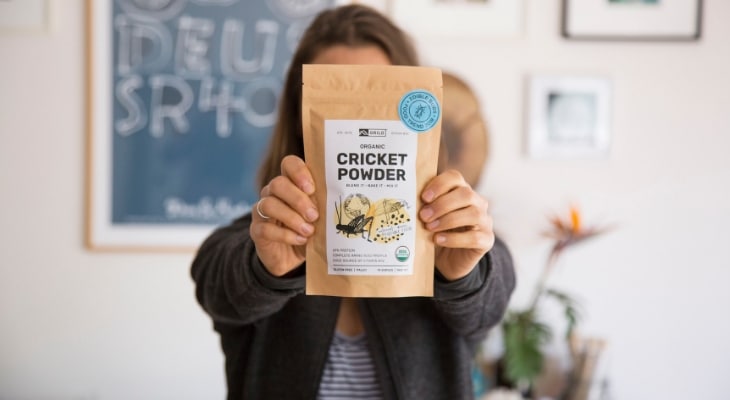Omega 3’s are essential for the cells in our body as they are an integral part of cell membranes and have a role in cell communication. In addition, polyunsaturated fatty acids have been linked in research, as being beneficial in reducing heart disease and stroke. Regular consumption of Omega 3 fatty acids, reduces the risk of diabetes, helps to prevent blood clots, protect against irregular heartbeats and lowers blood pressure especially in people with hyper-tension or atherosclerosis. Furthermore, omega 3 fatty acids supports immune health and defends against inflammatory disorders. However, all omega 3’s are not equal. For example, the fatty acids coming from animals such as fish or eggs contains EPA and DHA, a form of omega 3 that is directly absorbed by our body.
In contrast, omega 3’s from plant foods, such as walnuts and flaxseed contain ALA. Meaning it needs to undergo reconstruction by our body to be absorbed as EPA & DHA.
Whereas, Omega 6’s are pro-inflammatory which we need for our survival. This is because it helps protect our body from infection and injury. In addition, Omega 6 stimulates brain function, muscle growth, and hormone production which are all needed for our bodies to function properly.
However, too much of Omega 6 (which is found in a Modern diet) can also cause severe damage and contribute to disease when it’s chronic or abundant. For example, evidence suggest chronic inflammation is one of the predictors to most serious diseases, including heart disease, metabolic syndrome, diabetes, arthritis, Alzheimer’s and many types of cancer. This is why when we look at omegas in the diet we discuss the omegas ratio of omega 6 to omega 3 which is ideal at 3:1. So the idea is to consume enough omega 6s to function, but not in abundance, and to balance them with lots of omega 3s.
A crickets’ fibre composition:
Last but not least when we delve into fibre content of the cricket we find a significant amount of chitin. Chitin is an insoluble fibre which is contained in the crickets’ exoskeleton. Interestingly, the human gastric juices produce an enzyme called chitinase which suggest that our bodies are meant to break down chitin. However, this enzyme has been deemed inactive in people who consume a Westernised diet and have not been customised in consuming insects. In addition, chitin has been compared to cellulose, an insoluble fibre that is the main constituent of cell walls in plants that provides strength and rigidity.
Moreover, fibre serves our gut microbiome as a food and some fibre in particular promotes the growth of beneficial bacteria, also known as probiotics. Recent evidence suggests consuming chitin (ground into a flour) not only supported the growth of beneficial gut bacteria but consuming this powder on a regular basis reduced inflammation in the body. Additionally, the inflammatory protein in the blood, called TNF-alpha, has been linked to other measures of wellbeing, like depression and cancer.
Edible Insects are healthy! But “How on Earth do I eat crickets?”
You may be freaked out by the thought of eating crickets, but once you get over the “ugh” factor the good news is you won’t even recognise them. Crickets can be made into a flour or more accurately a powder. For example, cricket flour is made by drying or roasting crickets that are raised on domestic cricket farms and then milled into a fine flour-like texture. In addition, cricket flour is highly soluble under a wide pH range with high emulsion activity and moderate foaming capacity and foam stability, thus creating a product that can be utilised as a food additive in both acidic and alkaline foods. Hence, great solubility of a protein is an essential quality required for a food ingredient, as it significantly effects other properties such as emulsification, gelation and foaming. Therefore, the functional properties of flour are important to the manufacturing of products. For example, bread, cakes, biscuits, pancakes and muffins. Other uses for the powder include protein bars, bliss balls and smoothies. Check other recipes here!
Have you now past the initial disgust factor that comes with any thought of bug consumption? Because the health benefits you face are endless. Cricket flour in the health industry is highly valued. For instance, it is a gluten-free alternative, great for people with celiac disease or celiac sensitivity. Cricket flour is also high in protein. For example, the health benefits of consuming high protein foods include improved muscle mass, healthy weight maintenance, steady blood sugar levels, improved mood, healthy brain and heart function, and slows down metabolic aging. Moreover, cricket flour/powder is a good source of iron (Fe) and calcium (Ca). Iron (Fe) provides energy, increases muscle function and improves brain function. Additionally, consuming enough iron is also beneficial for women who are menstruating and or for women who are pregnant.
Calcium helps reduce blood pressure, strengthens bone health, supports a healthy weight and decreases the risk of colon and rectal cancers.

What does cricket flour taste like?
I describe the flavour as a mild nutty texture that imparts a subtle earthy feel (no different to a mushroom) that can be easily disguised with other ingredients and flavours. The raw cocoa fudge cricket energy bar that I ate tasted awesome, not a hint of cricket just raw nutritious goodness.
This article was supplied by Grilo Protein. They will be exhibiting at stand H46 at Naturally Good, from 2-3 June 2019.



